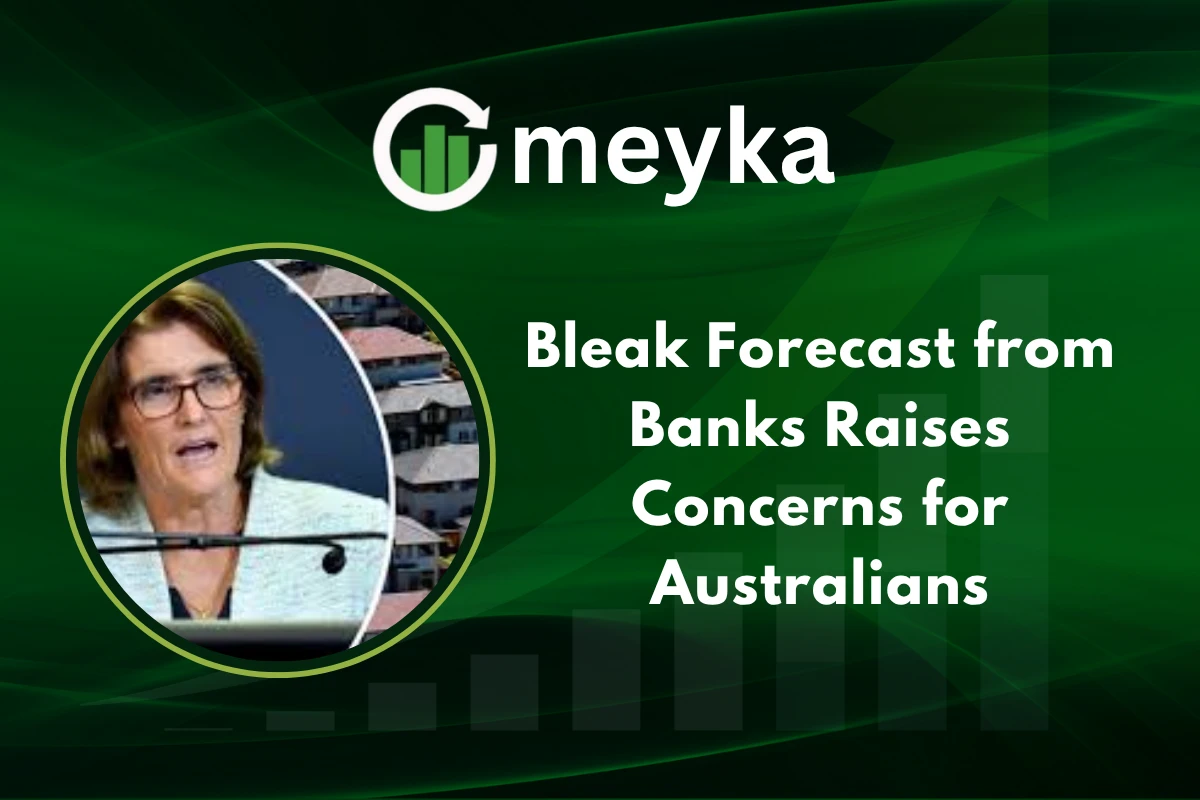Bleak Forecast from Banks Raises Concerns for Australians
Banks and forecasters are issuing Bleak warnings for Australia’s economy. Higher borrowing costs, stubborn inflation, and tighter household budgets are combining to squeeze families. This article explains why banks sound the alarm, what the RBA decision means, and how Australians can prepare for tougher months ahead.
Bleak: Why Are Bank Forecasts So Bleak for Australians?
Banks use models and data to make forecasts. Lately, those models are flashing red. Rising interest rates and continued cost-of-living pressures are the main drivers. Higher mortgage repayments, weaker consumer spending, and slower job growth feed into a gloomy picture that many lenders now expect.
What are the main drivers of the gloomy outlook?
- RBA interest rate settings keep borrowing expensive.
- High household debt makes families sensitive to rate rises.
- Squeezed real incomes as prices climb faster than wages.
Put simply: when rates rise, mortgage bills rise, spending falls, and growth slows.
Bleak Outlook Tied to RBA’s Latest Decision
The Reserve Bank’s recent decision has shaped the latest banking forecasts. Westpac’s analysis points out that the RBA move keeps borrowing costs elevated and leaves households exposed. Banks see this feeding into weaker home values and tighter household budgets in the coming quarters.
What did the RBA decide and why does it matter
The RBA signalled its view on inflation and growth while setting the cash rate. That choice affects mortgage rates almost immediately. For many homeowners with variable-rate loans, the monthly bill can rise fast, and that directly feeds into the “bleak” view banks are sharing.
Bleak: What Does This Mean for Mortgage Holders and Borrowers?
For mortgage holders, the message is clear: budget for higher payments. Banks warn of more households moving into mortgage stress if wages do not keep up. Those who are already near their limit could face tough choices like cutting spending or seeking longer loan terms.
How much more will repayments rise?
Exact increases depend on loan size, rate changes, and loan type. But even a one-percentage-point rise can add hundreds of dollars a month for many families. That’s why banks highlight mortgage stress as a central concern.
Bleak: Public and Media Reactions to the Forecast
The warnings have sparked public debate. Social and news feeds show worry among households and calls for clearer support from policymakers. For example, community groups and news outlets shared strong reactions after the RBA statement, reflecting growing anxiety over household finances.
How are people responding on social media?
Some users urged the government to act to cushion the worst effects, while others focused on practical tips like refinancing or cutting non-essential costs. Public sentiment is a mix of anger, fear, and practical problem-solving.
Bleak: Which Sectors Are Most at Risk?
Banks expect the pain to be concentrated but also broad-based. Key sectors in the firing line include:
- Housing and construction — rising mortgage stress may cool demand for new homes and pull construction activity down.
- Retail — households with less disposable income will tighten spending on non-essentials.
- Small businesses — consumer slowdown and higher borrowing costs hit small firms hard.
These sectors often feel the first knock-on effects of slower household spending. (WestpacIQ)
Bleak: Comparing Bank Forecasts Across the Industry
Not every bank uses the same assumptions, but many show a consistent trend toward weaker near-term growth. Westpac’s research outlines scenarios where GDP growth slows and lending demand softens. Other major banks have issued similar cautions, pointing to a shared concern across the industry about the depth of household strain.
Are all forecasts equally pessimistic?
No. Some banks see a softer slowdown and a quicker return to normal if inflation eases. Others warn of a longer adjustment period. The spread of views matters for policymakers and investors because it affects expectations for unemployment, house prices, and future rates.
Bleak: Are There Any Silver Linings?
There are small hopeful signs. If inflation cools faster than expected, the RBA could ease rates sooner, reducing the pressure on mortgage holders. Also, government policy steps targeted at support for the most vulnerable could blunt the worst household impacts.
What could help ease the bleak outlook?
- Faster wage growth to match rising prices.
- Targeted fiscal support for low-income households.
- A clear path from the RBA toward easing, if inflation improves.
These outcomes would reduce the pain and help consumer confidence recover.
Bleak: How Should Australians Prepare for a Bleak Economic Period?
Practical steps can help families and small businesses get through tougher times:
- Review your budget and cut non-essential spending.
- Talk to your lender about refinancing or switching to a longer term if needed.
- Build an emergency buffer where possible; even small savings help.
- Consider professional advice for debt management or mortgage repricing.
Preparation does not remove the risk, but it can reduce the shock of sharper downturns.
Conclusion: Facing the Bleak Forecast with Action
The word Bleak captures the tone banks are using for their near-term outlook. Higher rates, inflation pressures, and heavy household debt combine to create real risk for many Australians. But good policy choices, faster inflation relief, and practical planning by households can blunt the worst effects.
For now, the clear message from banks and analysts, echoed in the RBA discussion, is to prepare, plan, and watch the data closely.
FAQ’S
If banks lift interest rates, borrowing costs rise, making mortgages and loans more expensive. This reduces household spending, slows business investment, and can create a bleak economic outlook for growth.
Very low inflation can signal weak demand and slow wage growth. The RBA worries it could push the economy into stagnation, leading to a bleak environment for jobs and investment.
Some forecasts suggest rates may ease if inflation falls faster than expected. However, banks warn Australians not to expect quick relief, keeping the near-term view bleak for borrowers.
The RBA adjusts interest rates to balance inflation, growth, and employment. By managing rates, it tries to stabilize the economy and prevent outcomes that could turn bleak for households.
If rates drop, the Australian dollar often weakens as investors seek higher returns elsewhere. This can make imports more costly, creating a bleak impact on household budgets.
Rates are high because the RBA raised them to fight inflation. While this protects long-term stability, it creates short-term bleak pressure on mortgage holders and consumers.
Disclaimer
This is for information only, not financial advice. Always do your research.






